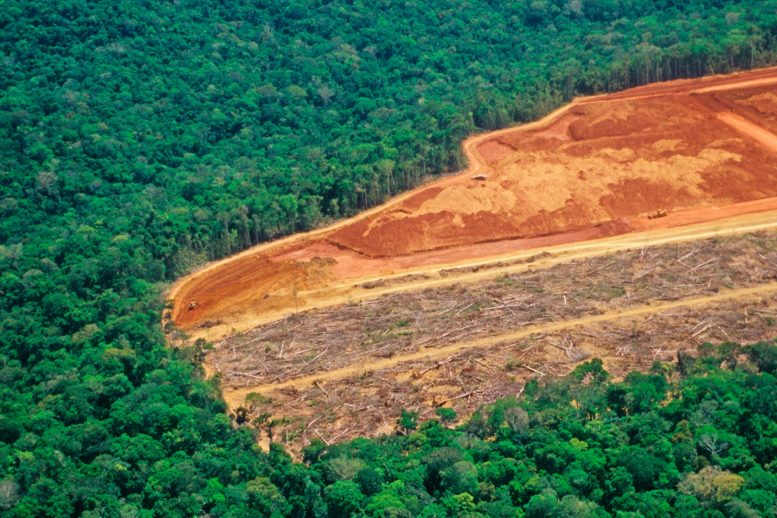
Between 2001-2020, deforestation equivalent to clearing forests in France, Germany, and Spain occurred. This has profound impacts on climate change and biodiversity. Technological advancements aid in monitoring, but tackling the issue requires a blend of economic policies and political will.
Vital forest is cleared every day, with major climate effects. Satellites have revolutionized the measurement of the problem, but what can we do about it?
Imagine if France, Germany, and Spain were completely blanketed in forests — and then all those trees were quickly chopped down. That’s nearly the amount of deforestation that occurred globally between 2001 and 2020, with profound consequences.
Deforestation is a major contributor to climate change, producing between 6 and 17 percent of global greenhouse gas emissions, according to a 2009 study. Meanwhile, because trees also absorb carbon dioxide, removing it from the atmosphere, they help keep the Earth cooler. And climate change aside, forests protect biodiversity.
“Climate change and biodiversity make this a global problem, not a local problem,” says MIT economist Ben Olken. “Deciding to cut down trees or not has huge implications for the world.”
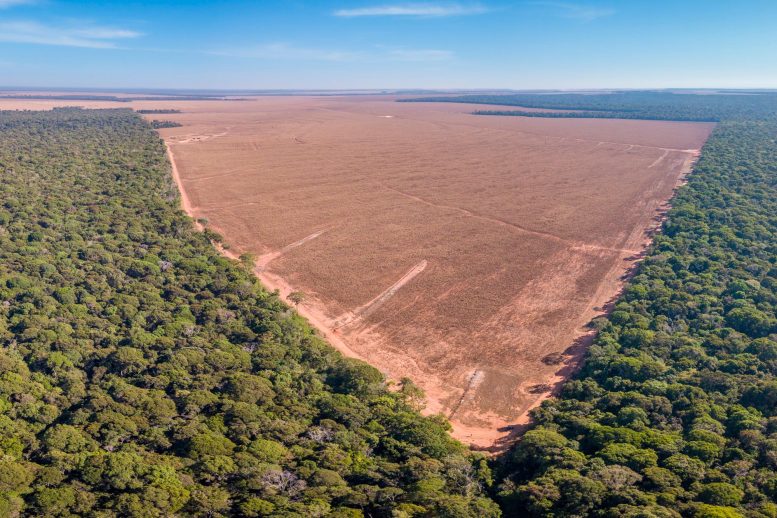
Economists Ben Olken of MIT and Clare Balboni are authors of a new review paper examining the “revolution” in the study of deforestation brought about by satellites, and analyzing which kinds of policies might limit climate-altering deforestation. Pictured is deforestation occurring in Mato Grosso, Brazil.
Advances in Monitoring Deforestation
However, deforestation is often financially profitable, so it continues at a rapid rate. Researchers can now measure this trend closely: In the last quarter-century, satellite-based technology has led to a paradigm change in charting deforestation. New deforestation datasets, based on the Landsat satellites, for instance, track forest change since 2000 with resolution at 30 meters, while many other products now offer frequent imaging at close resolution.
“Part of this revolution in measurement is accuracy, and the other part is coverage,” says Clare Balboni, an assistant professor of economics at the London School of Economics (LSE). “On-site observation is very expensive and logistically challenging, and you’re talking about case studies. These satellite-based data sets just open up opportunities to see deforestation at scale, systematically, across the globe.”
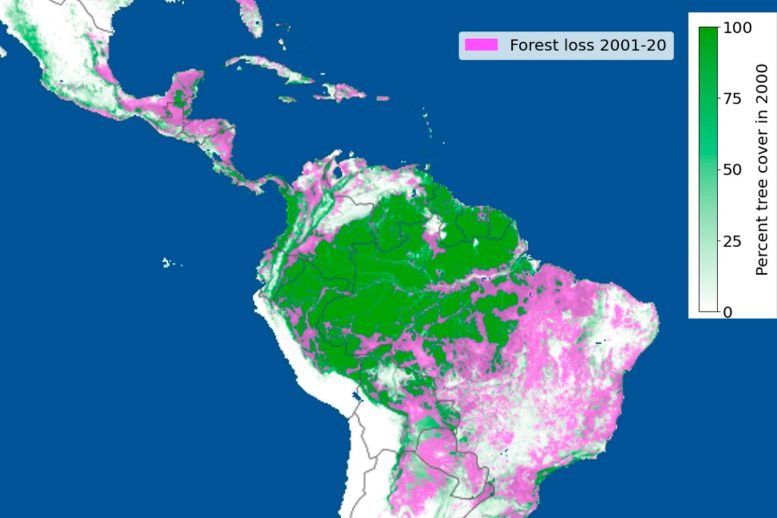
This figure shows forest loss between 2001-2020. The loss of forest is shown in pink. Forest is defined as 50% tree cover and is shown in green. Credit: Courtesy of the researchers
Balboni and Olken have now helped write a new paper providing a road map for thinking about this crisis. The open-access article, “The Economics of Tropical Deforestation,” was recently published in the Annual Review of Economics. The co-authors are Balboni, a former MIT faculty member; Aaron Berman, a PhD candidate in MIT’s Department of Economics; Robin Burgess, an LSE professor; and Olken, MIT’s Jane Berkowitz Carlton and Dennis William Carlton Professor of Microeconomics. Balboni and Olken have also conducted primary research in this area, along with Burgess.
So, how can the world tackle deforestation? It starts with understanding the problem.
Historical Views and Modern Reality
Several decades ago, some thinkers, including the famous MIT economist Paul Samuelson in the 1970s, built models to study forests as a renewable resource; Samuelson calculated the “maximum sustained yield” at which a forest could be cleared while being regrown. These frameworks were designed to think about tree farms or the U.S. national forest system, where a fraction of trees would be cut each year, and then new trees would be grown over time to take their place.
But deforestation today, particularly in tropical areas, often looks very different, and forest regeneration is not common.
Indeed, as Balboni and Olken emphasize, deforestation is now rampant partly because the profits from chopping down trees come not just from timber, but from replacing forests with agriculture. In Brazil, deforestation has increased along with agricultural prices; in Indonesia, clearing trees accelerated as the global price of palm oil went up, leading companies to replace forests with palm tree orchards.
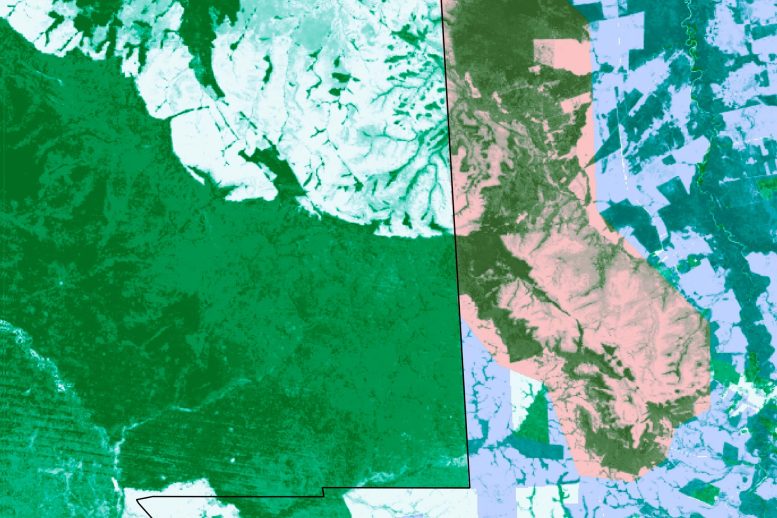
This figure shows the percentage of forest cover in 2000 near the border between Brazil, on right, and Bolivia. The black solid line is the Brazilian border. Forest cover is represented in shades of green, and white represents deforested areas. The red overlay marks protected areas as of 2004, and the blue overlay marks private non-protected land. Credit: Courtesy of the researchers
All this tree-clearing creates a familiar situation: The globally shared costs of climate change from deforestation are “externalities,” as economists say, imposed on everyone else by the people removing forest land. It is akin to a company that pollutes into a river, affecting the water quality of residents.
“Economics has changed the way it thinks about this over the last 50 years, and two things are central,” Olken says. “The relevance of global externalities is very important, and the conceptualization of alternate land uses is very important.” This also means traditional forest-management guidance about regrowth is not enough. With the economic dynamics in mind, which policies might work, and why?
Exploring Solutions
As Balboni and Olken note, economists often recommend “Pigouvian” taxes (named after the British economist Arthur Pigou) in these cases, levied against people imposing externalities on others. And yet, it can be hard to identify who is doing the deforesting.
Instead of taxing people for clearing forests, governments can pay people to keep forests intact. The UN uses Payments for Environmental Services (PES) as part of its REDD+ (Reducing Emissions from Deforestation and forest Degradation) program. However, it is similarly tough to identify the optimal landowners to subsidize, and these payments may not match the quick cash-in of deforestation. A 2017 study in Uganda showed PES reduced deforestation somewhat; a 2022 study in Indonesia found no reduction; another 2022 study, in Brazil, showed again that some forest protection resulted.
“There’s mixed evidence from many of these [studies],” Balboni says. These policies, she notes, must reach people who would otherwise clear forests, and a key question is, “How can we assess their success compared to what would have happened anyway?”
Some places have tried cash transfer programs for larger populations. In Indonesia, a 2020 study found such subsidies reduced deforestation near villages by 30 percent. But in Mexico, a similar program meant more people could afford milk and meat, again creating demand for more agriculture and thus leading to more forest-clearing.
At this point, it might seem that laws simply banning deforestation in key areas would work best — indeed, about 16 percent of the world’s land overall is protected in some way. Yet the dynamics of protection are tricky. Even with protected areas in place, there is still “leakage” of deforestation into other regions.
Still more approaches exist, including “nonstate agreements,” such as the Amazon Soy Moratorium in Brazil, in which grain traders pledged not to buy soy from deforested lands, and reduced deforestation without “leakage.”
Also, intriguingly, a 2008 policy change in the Brazilian Amazon made agricultural credit harder to obtain by requiring recipients to comply with environmental and land registration rules. The result? Deforestation dropped by up to 60 percent over nearly a decade.
Politics and Pulp
Overall, Balboni and Olken observe, beyond “externalities,” two major challenges exist. One, it is often unclear who holds property rights in forests. In these circumstances, deforestation seems to increase. Two, deforestation is subject to political battles.
For instance, as economist Bard Harstad of Stanford University has observed, environmental lobbying is asymmetric. Balboni and Olken write: “The conservationist lobby must pay the government in perpetuity … while the deforestation-oriented lobby need pay only once to deforest in the present.” And political instability leads to more deforestation because “the current administration places lower value on future conservation payments.”
Even so, national political measures can work. In the Amazon from 2001 to 2005, Brazilian deforestation rates were three to four times higher than on similar land across the border, but that imbalance vanished once the country passed conservation measures in 2006. However, deforestation ramped up again after a 2014 change in government. Looking at particular monitoring approaches, a study of Brazil’s satellite-based Real-Time System for Detection of Deforestation (DETER), launched in 2004, suggests that a 50 percent annual increase in its use in municipalities created a 25 percent reduction in deforestation from 2006 to 2016.
How precisely politics matters may depend on the context. In a 2021 paper, Balboni and Olken (with three colleagues) found that deforestation actually decreased around elections in Indonesia. Conversely, in Brazil, one study found that deforestation rates were 8 to 10 percent higher where mayors were running for re-election between 2002 and 2012, suggesting incumbents had deforestation industry support.
“The research there is aiming to understand what the political economy drivers are,” Olken says, “with the idea that if you understand those things, reform in those countries is more likely.”
Looking ahead, Balboni and Olken also suggest that new research estimating the value of intact forest land intact could influence public debates. And while many scholars have studied deforestation in Brazil and Indonesia, fewer have examined the Democratic Republic of Congo, another deforestation leader, and sub-Saharan Africa.
Deforestation is an ongoing crisis. But thanks to satellites and many recent studies, experts know vastly more about the problem than they did a decade or two ago, and with an economics toolkit, can evaluate the incentives and dynamics at play.
“To the extent that there’s ambuiguity across different contexts with different findings, part of the point of our review piece is to draw out common themes — the important considerations in determining which policy levers can [work] in different circumstances,” Balboni says. “That’s a fast-evolving area. We don’t have all the answers, but part of the process is bringing together growing evidence about [everything] that affects how successful those choices can be.”
Reference: “The Economics of Tropical Deforestation” by Clare Balboni, Aaron Berman, Robin Burgess and Benjamin A. Olken, September 2023, Annual Review of Economics.
DOI: 10.1146/annurev-economics-090622-024705







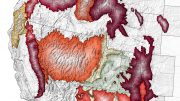

HVAC zoning doesn’t work, always get separate systems